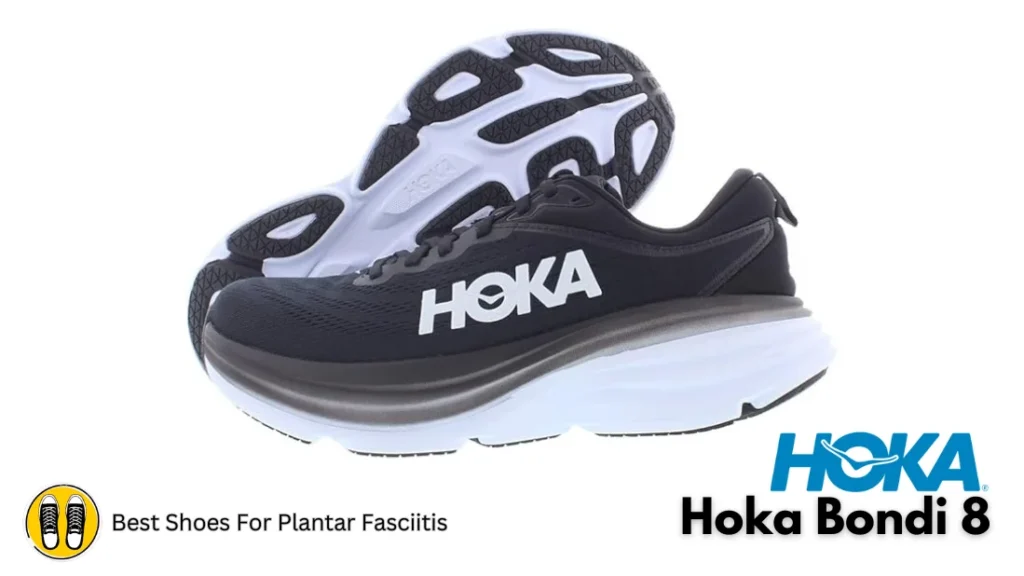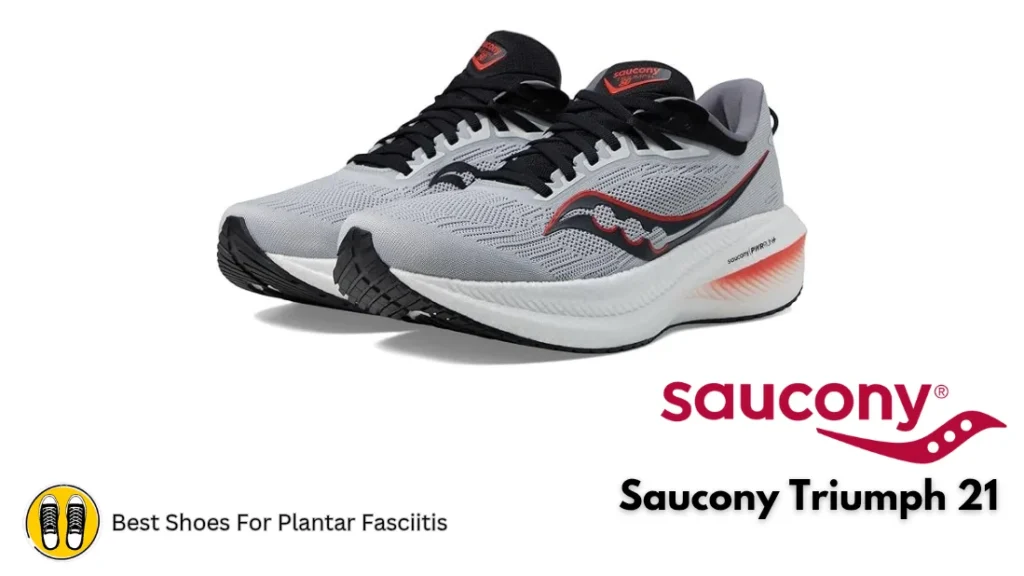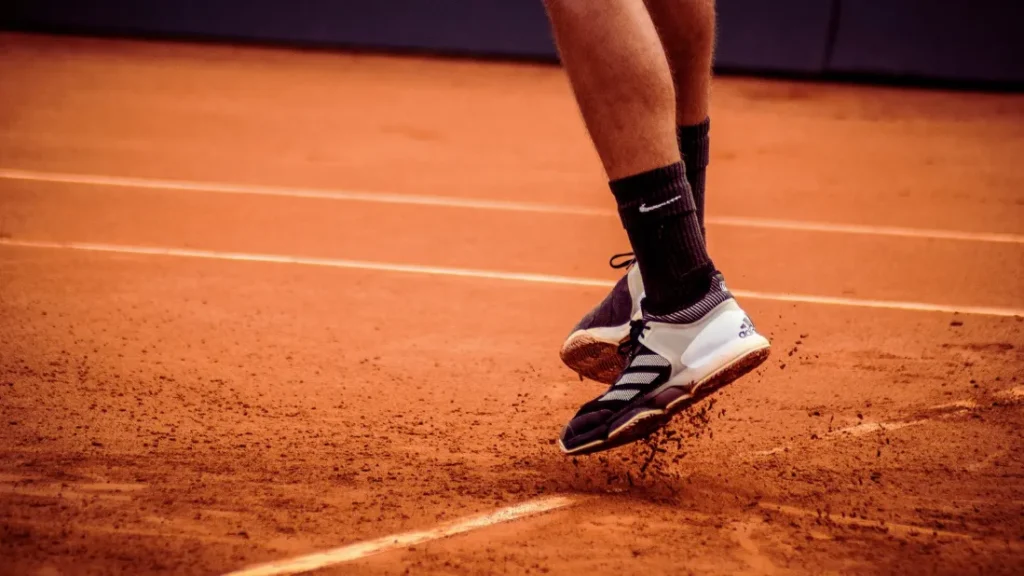Whether you’re into running, training, walking, or playing sports, wearing the Best Athletic Shoes For Plantar Fasciitis which can significantly reduce plantar fasciitis pain. A good athletic shoe should offer arch support, cushioning, and shock absorption to relieve heel pain and prevent further strain. Below is a detailed guide to the top 7 best athletic shoes for plantar fasciitis, along with features, pros & cons, and user reviews.
Top 7 Best Athletic Shoes For Plantar Fasciitis
Click on Each Headings for Details:
- HOKA ONE ONE Bondi 8 – Best Overall Athletic Shoe for Plantar Fasciitis
- Brooks Ghost 15 – Best for Running & Jogging
- New Balance Fresh Foam X 1080v12 – Best for Versatility
- ASICS Gel-Kayano 30 – Best for Stability & Overpronation
- Nike Air Zoom Pegasus 40 – Best for Speed & Performance
- Saucony Triumph 21 – Best for Maximum Cushioning
- Adidas Ultraboost 23 – Best for Lifestyle & Training
1. HOKA ONE ONE Bondi 8 – Best Overall Athletic Shoe for Plantar Fasciitis

Key Features:
- Ultra-Soft EVA Midsole – Provides maximum cushioning.
- Meta-Rocker Technology – Promotes a smooth and effortless stride.
- Wide, Stable Base – Reduces pressure on the plantar fascia.
Pros:
✔ Excellent shock absorption.
✔ Ideal for running, walking, and training.
✔ Great for standing all day.
Cons:
✖ Slightly heavy.
✖ High price point.
User Review:
“I wear these for workouts and daily walking—my plantar fasciitis pain is gone!”
2. Brooks Ghost 15 – Best for Running & Jogging

Key Features:
- DNA LOFT v2 Cushioning – Soft yet responsive.
- Segmented Crash Pad – Absorbs impact for smooth transitions.
- 3D Fit Print Upper – Offers a flexible and supportive fit.
Pros:
✔ Lightweight and comfortable.
✔ Great for both long and short runs.
✔ Reduces heel pain effectively.
Cons:
✖ Not ideal for lateral movements.
✖ Slightly expensive.
User Review:
“I can run again without foot pain—best investment ever!”
3. New Balance Fresh Foam X 1080v12 – Best for Versatility

Key Features:
- Fresh Foam X Midsole – Ultra-soft yet supportive.
- Flexible, Breathable Knit Upper – Adapts to foot shape.
- Durable Rubber Outsole – Ideal for different activities.
Pros:
✔ Perfect for running, walking, and gym workouts.
✔ Soft, responsive cushioning.
✔ Wide toe box for comfort.
Cons:
✖ Some find the heel too soft.
✖ Pricey.
User Review:
“I wear these for everything—running, workouts, and errands. No more foot pain!”
4. ASICS Gel-Kayano 30 – Best for Stability & Overpronation

Key Features:
- PureGEL™ Technology – Absorbs shock for heel relief.
- 4D Guidance System™ – Enhances stability and alignment.
- FF BLAST™ PLUS Cushioning – Soft yet bouncy feel.
Pros:
✔ Best for overpronators and flat feet.
✔ Excellent arch and heel support.
✔ Great for long-distance running and training.
Cons:
✖ Runs narrow for some.
✖ Higher price point.
User Review:
“I have flat feet, and these provide the best support for my plantar fasciitis.”
5. Nike Air Zoom Pegasus 40 – Best for Speed & Performance

Key Features:
- Zoom Air Cushioning – Responsive and lightweight.
- Waffle Outsole – Provides traction and durability.
- Mesh Upper – Breathable and flexible.
Pros:
✔ Great for fast-paced running and training.
✔ Lightweight and comfortable.
✔ Provides good heel support.
Cons:
✖ Not ideal for high-impact sports.
✖ Runs small.
User Review:
“Perfect for speed training while keeping my plantar fasciitis in check!”
6. Saucony Triumph 21 – Best for Maximum Cushioning

Key Features:
- PWRRUN+ Cushioning – Soft and bouncy feel.
- FORMFIT Design – Adapts to foot shape for a perfect fit.
- Durable Outsole – Ideal for various terrains.
Pros:
✔ Extra cushioning for heel pain relief.
✔ Perfect for long runs and extended wear.
✔ Wide width options available.
Cons:
✖ Slightly bulky.
✖ Pricey.
User Review:
“Feels like walking on clouds! No more foot pain!”
7. Adidas Ultraboost 23 – Best for Lifestyle & Training

Key Features:
- Boost™ Midsole – Delivers energy return and comfort.
- Primeknit+ Upper – Flexible and breathable.
- Torsion System – Adds midfoot stability.
Pros:
✔ Stylish and versatile for casual wear.
✔ Soft, responsive cushioning.
✔ Works well for gym workouts and walking.
Cons:
✖ Not as supportive for overpronators.
✖ Expensive.
User Review:
“These shoes are stylish yet supportive—love them for daily wear!”
Frequently Asked Questions (FAQs)
What Are the Most Important Features in Athletic Shoes for Plantar Fasciitis?
✔ Arch Support – Helps reduce strain on the plantar fascia.
✔ Cushioning – Absorbs shock and provides comfort.
✔ Heel Stability – Prevents excessive foot movement.
✔ Durability – Ensures long-lasting support.
Can I Use Running Shoes for Other Athletic Activities?
✔ Yes, running shoes work well for walking and light workouts, but may lack lateral stability for sports like tennis or basketball.
✔ If you play sports, choose shoes designed for multi-directional movement.
Do I Need Orthotic Insoles in Athletic Shoes for Plantar Fasciitis?
✔ If the shoe already has built-in arch support, you may not need orthotics.
✔ If you have flat feet or severe plantar fasciitis, custom orthotics may help.
How Long Do Athletic Shoes for Plantar Fasciitis Last?
✔ Running shoes: Replace every 300-500 miles or 6-12 months.
✔ Cross-trainers: Replace every 6 months if used regularly.
Are Expensive Athletic Shoes Worth It for Plantar Fasciitis?
✔ Yes! High-quality shoes provide better support, durability, and comfort.
✔ Cheap shoes may lack proper arch support and cushioning, leading to worse pain.
What Is the Best Athletic Shoe Brand for Plantar Fasciitis?
✔ Best for Running: Brooks, ASICS, HOKA.
✔ Best for Training & Gym Workouts: Nike, Adidas, New Balance.
✔ Best for Walking & Everyday Wear: Saucony, Vionic, Skechers.
What Are the Most Important Features in Athletic Shoes for Plantar Fasciitis?
✔ Arch Support – Helps reduce strain on the plantar fascia.
✔ Cushioning – Absorbs shock and provides comfort.
✔ Heel Stability – Prevents excessive foot movement.
✔ Durability – Ensures long-lasting support.
Can I Use Running Shoes for Other Athletic Activities?
✔ Yes, running shoes work well for walking and light workouts, but may lack lateral stability for sports like tennis or basketball.
✔ If you play sports, choose shoes designed for multi-directional movement.
Do I Need Orthotic Insoles in Athletic Shoes for Plantar Fasciitis?
✔ If the shoe already has built-in arch support, you may not need orthotics.
✔ If you have flat feet or severe plantar fasciitis, custom orthotics may help.
How Long Do Athletic Shoes for Plantar Fasciitis Last?
✔ Running shoes: Replace every 300-500 miles or 6-12 months.
✔ Cross-trainers: Replace every 6 months if used regularly.
Are Expensive Athletic Shoes Worth It for Plantar Fasciitis?
✔ Yes! High-quality shoes provide better support, durability, and comfort.
✔ Cheap shoes may lack proper arch support and cushioning, leading to worse pain.
What Is the Best Athletic Shoe Brand for Plantar Fasciitis?
✔ Best for Running: Brooks, ASICS, HOKA.
✔ Best for Training & Gym Workouts: Nike, Adidas, New Balance.
✔ Best for Walking & Everyday Wear: Saucony, Vionic, Skechers.
For more information, please visit: Shoes For Plantar Fasciitis

